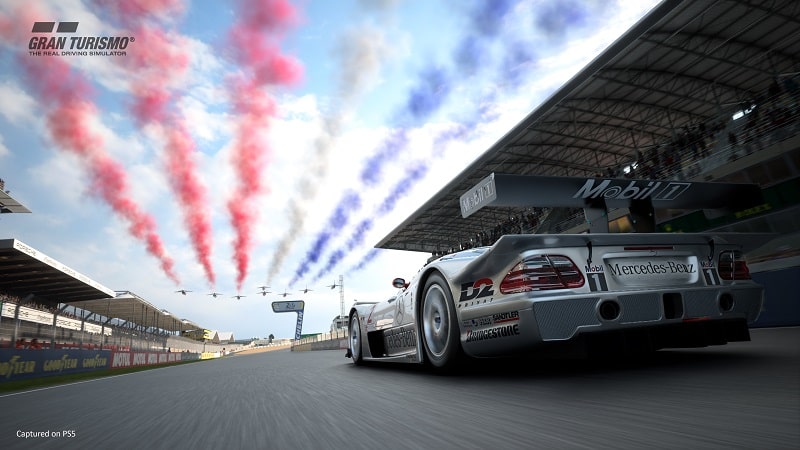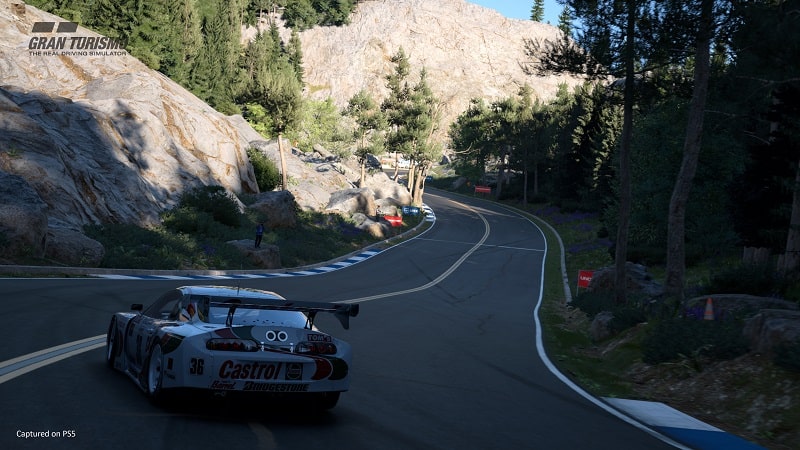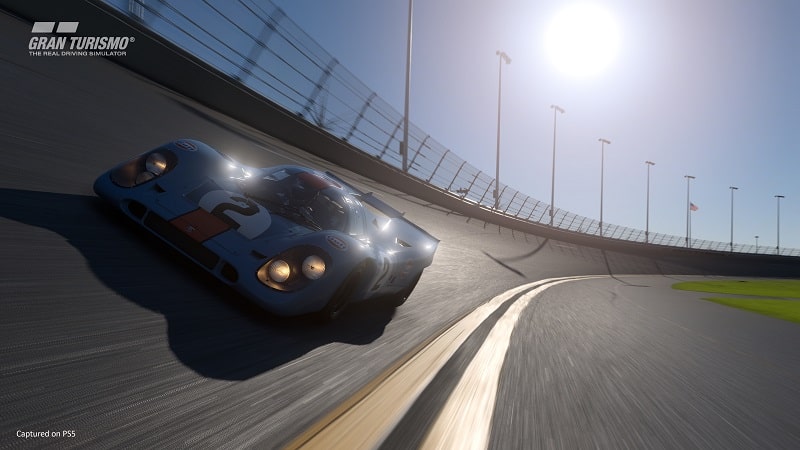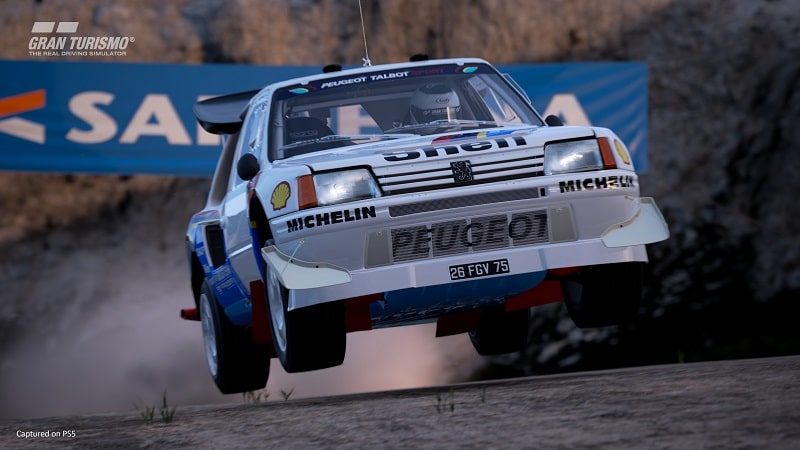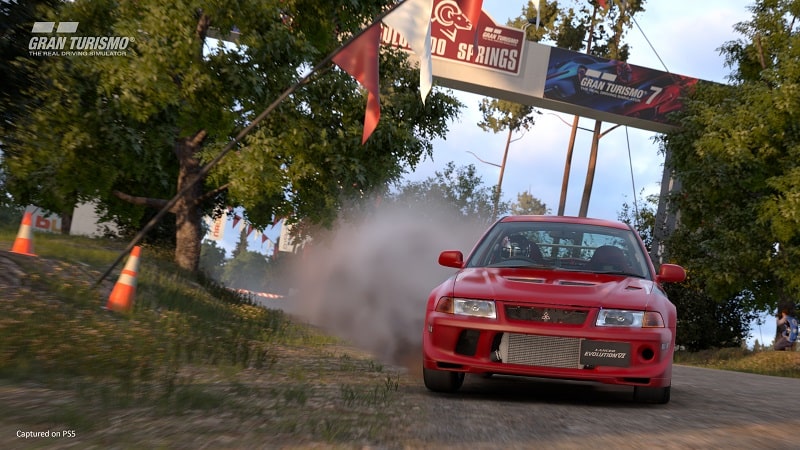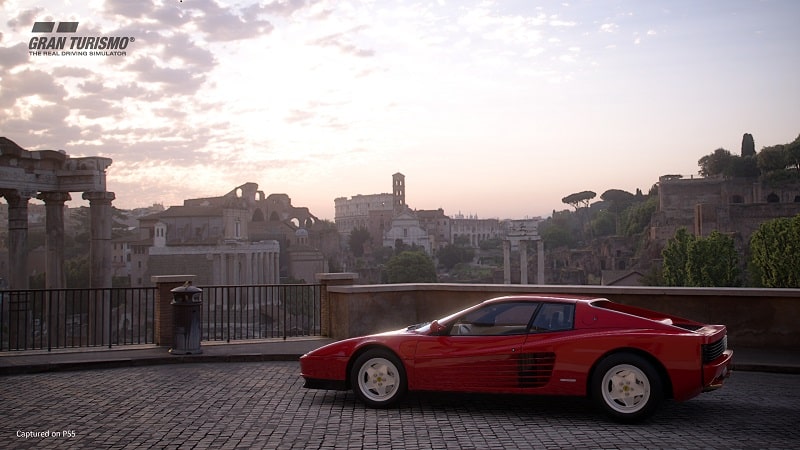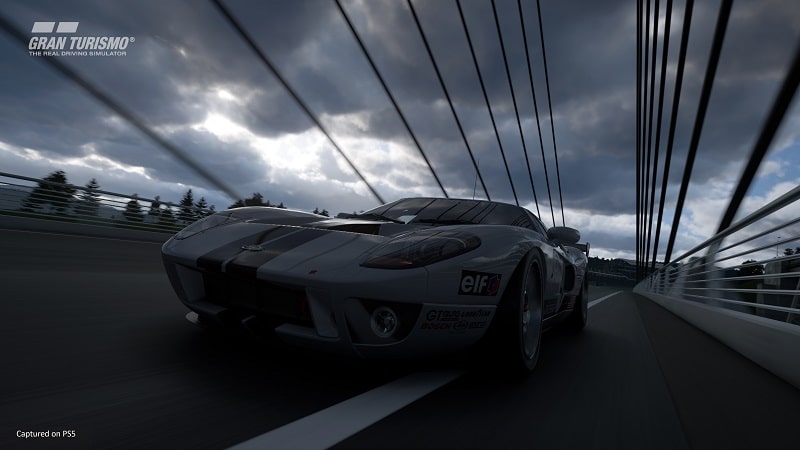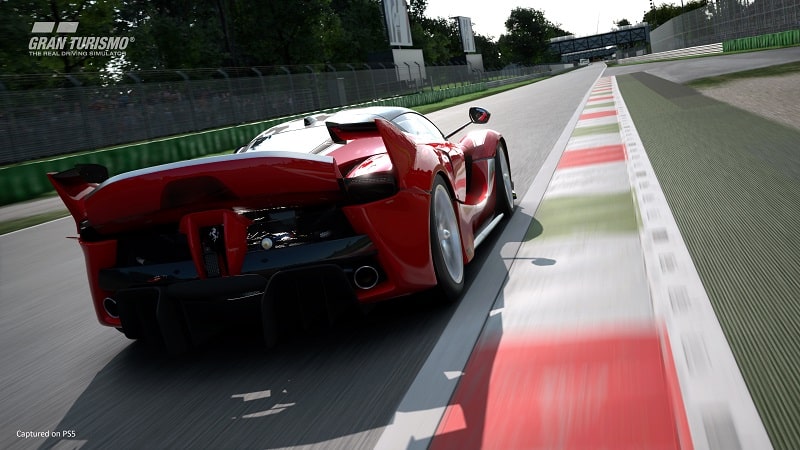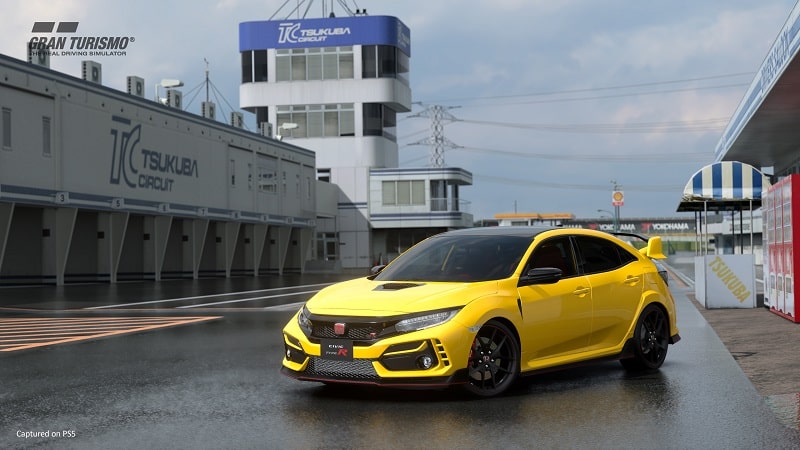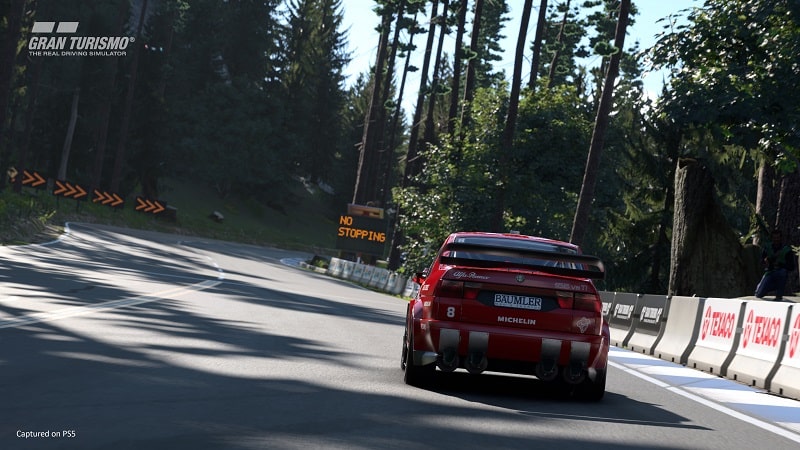Gran Turismo 7 Review (PS5) - Gran Turismo Is Back For Real This Time - PlayStation Universe (original) (raw)
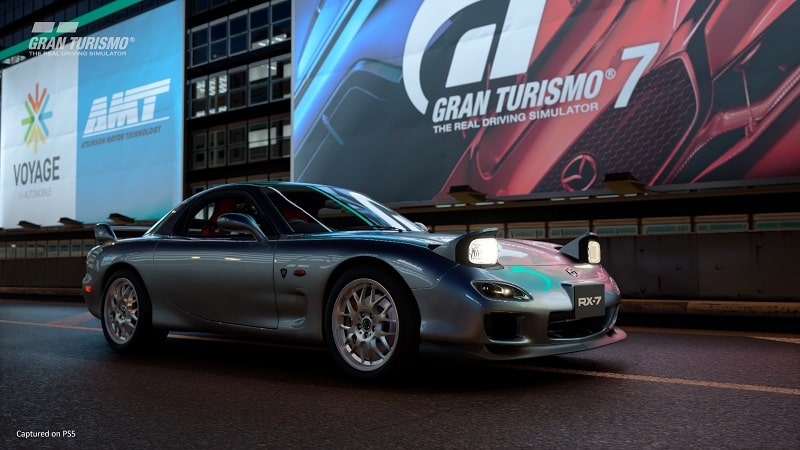
Gran Turismo 7 PS5 review. Rather than the release of the first Gran Turismo on December 23rd, 1997, Gran Turismo 7 would have you believe that its roots go much deeper than that, harkening back to the halcyon days of motor vehicle founders Carl Benz and Henry Ford as a primary touchstone for its inspiration and making the connection between the act of racing and a deeper love of cars an absolutely inextricable one.
Broadly speaking, this is how Polyphony Digital have approached the development of Gran Turismo 7 on the series twenty-fifth anniversary – fashioning a new entry in its legendary racing franchise that can be traced back to the very origins of PlayStation and the series at its very best, while also leveraging many of the benefits that contemporary technology has to offer in a delectable kaleidoscope of motorsport worship. So yeah, Gran Turismo is back – for real this time.
Gran Turismo 7 PS5 Review
PlayStation’s Marquee Racing Series Finds Pole Position On PlayStation 5
Whether you’re a long-time Gran Turismo savant, a part-time wannabe racer or just a casual driver looking to hit the track as and when time and inclination allows, Gran Turismo 7 feels warmly welcoming. In a much appreciated departure from the rather scattershot approach of Gran Turismo Sport’s content offering, Gran Turismo 7 has something for just about everybody.
This is just as well really, as Gran Turismo 7’s main hub screen for its single-player shenanigans feels like a barely evolved version of Gran Turismo Sport’s map hub and as such, feels a little intimidating and clunky to navigate. Quite simply, there are lots and lots of menus for you to click and scroll through and it’s a little surprising that Polyphony Digital didn’t take the opportunity with Gran Turismo 7 to overhaul this UI from the ground up.
Thankfully though, for newer players Gran Turismo 7 a handy virtual guide not only provides a concise explanation of what everything in the hub does – from purchasing new cars to online multiplayer (more on that later), but it also helpfully directs to newcomers to the GT Café; a great first stop destination for interning new players in all things Gran Turismo.
Presented as a continental style coffee shop with slow and indulgent panning shots of highly detailed coffee tables, menus and coffee cups, the GT Café is much more than just an attractive venue. Guided by GT Café proprietor Luca, players are provided with special ‘menus’ that task the player with completing one or a series of tasks, providing an additional incentive in the form of a special gift in return for each task completed.
Essentially a series of relatively simplistic missions, these menu missions prove to be a fantastic way for newcomers to get to grips with Gran Turismo 7, encouraging them to collect cars from manufacturers from a specific country or continent, race cars of a particular drive type or quite simply just provide guidance for washing your car or tuning up your engine.
In addition to providing some much needed structure to the proceedings for newcomers, each time you complete a set of menu missions you’re able to gain a wealth of historical insight into the car brands and types that you’ve been tasked with seeking out. From a beautifully restored montage of black and white photographs and classic footage, to an easy to understand text based digest of key facts, Gran Turismo 7 does its utmost to turn anybody who plays the game into a feverish petrolhead and, well, it works.
You can truly feel the love that Polyphony Digital has for the automotive industry in Gran Turismo 7. Gran Turismo 7 isn’t just about racing cars, it’s also about motorsport hobbyism and the collecting cars, tuning cars to within an inch of their performance apex and falling in love with their history and humble beginnings. And it’s this what continues to separate Gran Turismo 7 from the more po-faced likes of the Forza Motorsport, GRID and Assetto Corsa games – there’s a deep love for these rumbling, four-wheeled wonders that oozes out of every digital pore in Polyphony Digital’s latest and it’s something that really feels properly enriching thanks to the Museum mode which provides an in-depth historical look at the some of the biggest manufacturers ever.
Further Reading – Gran Turismo 7’s Museum Mode Is A Car Lover’s Dream
There are even super casual ‘Music Rally’ races, where you drive along to the beat of the music, trying to reach the finish line as quickly as possible while checkpoints provide Out Run style time boosts to keep you going. It’s nothing ground-breaking sure, but it serves as just one more example of how Polyphony Digital really is making an overture to players of all experience, skill levels and time availability.
At every turn Gran Turismo 7 does its very best to make players feel welcome rather than alienated which considering the highly technical and complex nature of the industry that it deals with, proves to be no mean feat and very welcoming indeed to say the least. That said, Polyphony Digital has not forsaken the depth and sophistication that Gran Turismo veterans have long admired about the long-running motorsport series.
Though the menu missions help to guide newer and more casual racers towards various races around the globe, so too do more experienced Gran Turismo players have licence to go wherever they want in the world and take on whichever races, cups and tournaments in the order that they like. And this is the thing, because Gran Turismo 7 does such a remarkably good job of interning players into its deeper mechanisms and gameplay, it isn’t long before you’re off micro-tuning cars, building up piles of cash from special races and taking on the best in the world.
Naturally then, progression is a massive part of Gran Turismo 7 and Polyphony Digital has engineered layers of advancement throughout the game. Not only do you gain levels (and thus random gifts) for collecting cars – which in itself provides a neat incentive to do so, but you also unlock daily random gifts for doing ‘daily exercise’, which is essentially driving a certain number of miles each day.
If that sounds a little too much like the sorts of cloying progression systems you might get in more predatory, free to play style affairs – don’t worry. These progression systems are largely benign and while you can use real life funds to buy in-game money to purchase new cars and upgrades, the fact remains that you can still easily earn those in-game funds hand over fist by simply just, well, racing. Which is good and arguably how it should be.
What is a little odd however is that some of Gran Turismo 7’s progression systems are used to effectively gate certain parts of the game. Multiplayer for example isn’t unlocked until you’ve done around ten or so GT Café menu missions, so those expecting to leap straight into local split-screen or online multiplayer might be a little disappointed that these modes aren’t available straight away. Likewise, you can’t fully upgrade your cars with a full range of available parts until you’ve reached a certain level as a car collector. It all feels a little forced and unnecessary.
Further Reading – Gran Turismo 7 Will Get To Transfer GT Sport DR & SR Data Starting Feb. 15
Speaking of gating, or more appropriately ‘grating’, the licence tests; a long-time fixture of the Gran Turismo franchise also return in Gran Turismo 7, but to be honest they’re as pointless now as they were back in 1997. Once more you need to not only demonstrate your driving prowess in a series of really dry and boring tests that have you shaving off hundredths of a second over and over until your eyes fall out, but many of the best races and cups in the game are locked behind the licence progression system, requiring players to have a certain licence type before they’re able to take part. So yep, the licence tests still suck and are very much a relic of the past that I hoped Gran Turismo 7 would have done away with – but alas, here we are.
Certainly though, once things get going in this regard, long time Gran Turismo players will soon recognise that familiar and hugely satisfying gameplay loop of gaining new cars, winning races and reinvesting that money back into tuning up cars to up their PP (Performance Point) stat in order to make them more competitive in Gran Turismo 7’s most challenging races.
Then there are the special, expert mission races which keep things nice and spicy by requiring that the player fulfil a set of special criteria, such as overtaking other cars without hitting another driver or performing a power slide without hitting the barriers. This is quite simply, from a single-player content perspective at least, the Gran Turismo experience that you’ve always known, loved and desperately wanted 2017’s Gran Turismo Sport to be.
Further Reading – Best PS5 Racing Games Ranked
Away from the single-player side of things, Gran Turismo 7 doesn’t disappoint on the multiplayer front either. Though it’s a touch frustrating that a number of menu missions have to be completed first before the multiplayer modes are unlocked (something that should be available from the get-go regardless, but I digress), being able to play Gran Turismo 7 in local split-screen with a friend is still a boon nonetheless and I’m thankful that this feature has been carried over from the previous instalment, Gran Turismo Sport.
When it comes to online multiplayer though, Gran Turismo 7 surpasses expectations. Though the Sport Mode and lobbies that were an integral part of Gran Turismo Sport’s online offering return, Gran Turismo 7 expands on that concept further with the idea of a Meeting Place where you can not only enjoy online track days and watch other players race, but you can also share custom car liveries with one another, as well as a veritable raft of in-car photography. Quite simply, if you’re looking to take to the track with some friends and share in the love of cars – either close by or a continent away, Gran Turismo 7 has your back and then some with a real desire to build up a thriving community centered around the love of cars.
Once again speaking about the love of cars, the return of the photo and Scapes modes to Gran Turismo 7 clearly show that Polyphony’s visual worship of these motor vehicles and their varied, sleek forms remains wholly intact – now emboldened by the higher resolution of PS5 and a wide range of new, real world backgrounds to present your beloved motor vehicle against. Once again it’s certainly no exaggeration to say that the Scapes mode ensures that you’ll have the best looking television in the room if you just leave it on let it do its thing as the world’s most attractive screen saver.
Further Reading – Gran Turismo Sophy Is Sony’s Breakthrough AI Tech
Regardless of the content that Gran Turismo 7 boasts though, it’s ostensibly the core driving gameplay that is the star of the show here; a fact that has long been the case since the Gran Turismo franchise began some twenty-five years ago. That pitch perfect handling, which oscillates so very widely between car manufacturers, individual cars and the near infinitesimal tuning possibilities that Gran Turismo 7 offers in each case remains undimmed in Polyphony’s latest offering.
Whether you’re mustering every atom of resistance in your hands to fight off the back end of your Corvette Convertible (C3) ‘69 swerving uncontrollably outward, or leveraging the deft, muscle-twitch handling of the surprisingly powerful Audi TT, mastery in Gran Turismo 7 isn’t something you can ever gain – but instead something that you work towards with each vehicle that becomes truly yours and is tweaked to within an inch of its life.
Of course that description could largely apply to at least the last three games in the series, but as is seemingly the mode of operation elsewhere in the package, Gran Turismo 7 does more in this area too. You see, adding further sophistication to the proceedings is the new weather system and enhanced AI that has been bestowed upon the various computer controlled drivers that you’ll come up against throughout the game.
Starting with the dynamic weather, if the sun is shining or the heavens have opened, each scenario and every one in between can result in a markedly different driving experience. A sun-kissed track can provide ideal levels of grip, though a lack of cloud cover might result in a little too much glare. On the other end of the scale, having a whole heap of rain crash onto the track can not only cause aquaplaning and thus a loss of grip, but it can also cause cars up ahead to shoot spray backwards into your view, resulting in a wealth of visibility problems.
Gran Turismo 7 goes a step further though. Not only do multiple weather states feature in the game, but during races the weather not only changes, but can also affect how you drive disproportionately around the track. For example, having the sun break out after a period of heavy rainfall results in water evaporating from much of the track, but still being present in deeper corners around select areas on the track where the physics have allowed the liquid to pool. Honestly, the attention to detail in this regard is just absolutely breath-taking.
Complimenting Gran Turismo 7’s sublime handling model, the DualSense controller also has a role to play in the overall experience. Since the PlayStation 5 was properly revealed, Sony has been keen to push the mantra that its latest controller is all about generating a connection – a sensation of a 1:1 feeling with the game that you are playing. In the context of Gran Turismo 7, the DualSense controller gives perhaps the most impressive demonstration of its Haptic Feedback technology to date, accurately conveying to the player the physicality of every little bump, collision and the constant rumbling of dirt spitting around the tyres in a way that just hasn’t been felt before.
Further Reading – Best PS5 Games Ranked
Though the adaptive triggers do a commendable job of communicating a real sensation of resistance when it comes to breaking and jamming the accelerator (a particular sensation that is most keenly felt when driving uphill), the Haptic Feedback aspect that the DualSense controller brings to the table really is the star of the show nonetheless.
Further afield, the array of tracks that are available to ply your racing trade is generously numerous. Taking in remastered versions of some classic Gran Turismo tracks such as Deep Forest Raceway and Trial Mountain, together with a whole bunch of real-life raceways such as the Nurburgring GP, the Laguna Seca Raceway and Brands Hatch, Gran Turismo 7’s ample variety of tracks, together with their reverse variants, provides a more than suitable theatre for the cars of the world to do their dance upon.
Much like Horizon Forbidden West before it and God of War Ragnarok that will come after it, Gran Turismo 7 is a cross-generation developed effort that ostensibly has its roots in last generation technology. Now, while my heart (and eyes) surely yearn for a native, full-fat Gran Turismo effort that is solely dedicated to the PlayStation 5 hardware, it is still very difficult to not be impressed by what Polyphony Digital has wrought here.
Further Reading – Gran Turismo 7 Trophies Revealed For Highly Anticipated PS4, PS5 Racer
Visually speaking, Gran Turismo 7 is not a massive cut above 2017’s Gran Turismo Sport – at least on first inspection. However, the addition of smartly implemented visual presets soon make all the difference. As has been largely the case throughout this console generation so far, Gran Turismo 7 allows players to choose from ray tracing and performance visual modes, but while the latter provides the sort of mostly rock solid 60 frames per second presentation that one would expect, it’s actually the ray tracing mode that ends up being the preferable option. Hear me out.
With ray tracing mode on, Gran Turismo 7 does a clever thing whereby it renders replays and other non-interactive scenes with ray-traced visuals at 30 FPS (and plenty of motion blur), but where the need for a high response time is required – in the actual racing itself – the ray tracing technique is pared back and the framerate goes back up to 60 frames per second, essentially giving players the best of both worlds. Certainly then, it’s encouraging to see solutions like this that demonstrate as the PlayStation 5 becomes more mature, so too is there a correlating upward trajectory of neat tricks like this to really get the most from the hardware.
Beyond the presets themselves, Gran Turismo 7 is nonetheless a beautiful looking racer, generously packed with detailed car interiors across many of its 420 or so vehicles, an abundance of trackside detail and the aforementioned array of impressive looking weather effects that all contribute to a gorgeous looking PS5 effort that is extremely easy on the eyes to say the least.
Further Reading – Gran Turismo 7 On PS4 Will Ship On Two Discs
One other big boon that the PS5 version of Gran Turismo 7 brings both over Gran Turismo Sport and the last generation iteration of this year’s entry is that of loading times. While navigating around the hub UI and seemingly endless cavalcade of menus can prove exhausting from time to time, the almost instantaneous loading times make it a much more bearable exercise while restarting a failed race can be done in just a couple of seconds. It’s a big improvement over what we’ve had to deal with in previous games and makes me thank our lucky stars that super fast SSD technology is now a thing when it comes to PlayStation gaming.
So this is Gran Turismo 7. Though it certainly carries the baggage of some of the weaker elements from previous games, a steadfast return to the generous single-player campaign offerings of old, together with a significantly upgraded visual presentation and most importantly a deeply felt love for cars that bleeds through every aspect of the game all ensures that one single statement is true – Gran Turismo is back.
Gran Turismo 7 releases for PS4 and PS5 on March 4, 2022.
Review code kindly provided by PR.
